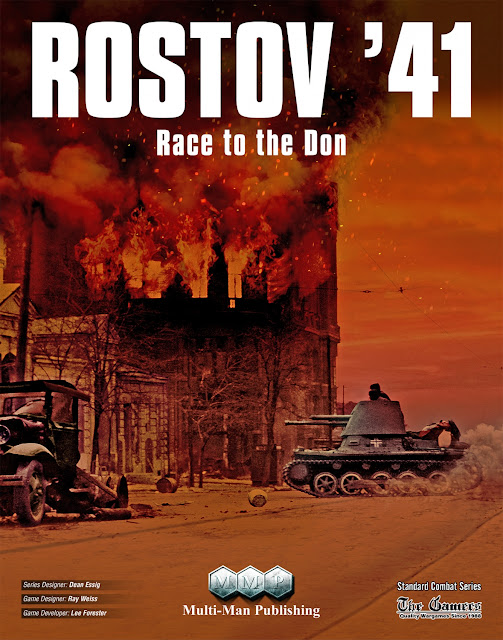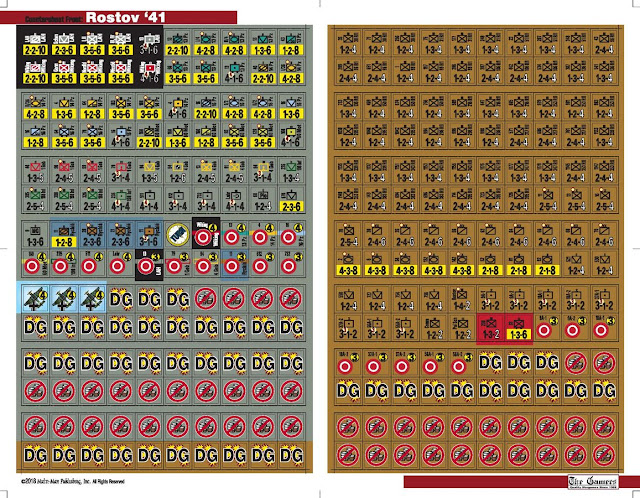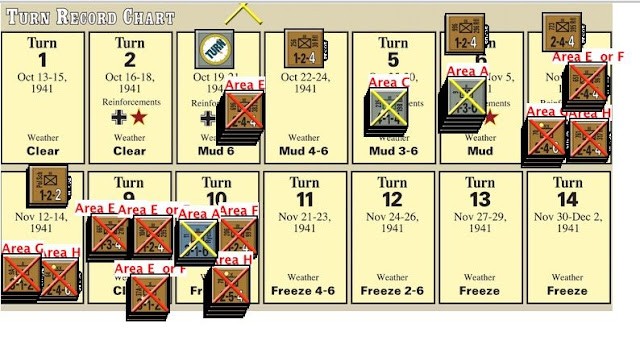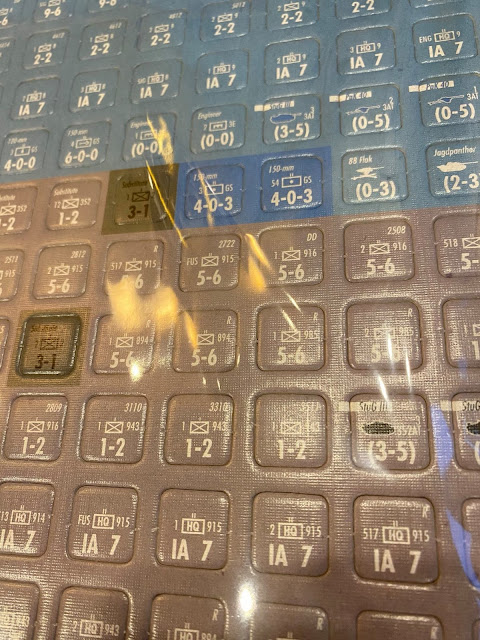Gameplay
The game pits you, as a patron of the arts in Florence commissioning paintings, sculptures and architecture. Prestige Points are earned for supporting and funding artworks and they ultimately decide who wins the game, most Prestige Points wins. All of that sounds, quite simple but I had a bear of a time trying to learn the game, I think partly due to the fact the rules never explicitly state that the squares across the boards are the artworks. It’s bloomin’ obvious now I’ve played it a handful of times, but I found the initial learning curve pretty steep and opaque. Not least because everything is written in quite arcane Italian - more on that later.
This is a competitive worker placement game for 1 to 5 players. Every piece of art (its name at least) and character card are part of true history and that is fantastic. I feel slightly cleverer...each time I finish a game of this. There are a bunch of different mechanisms and abilities that change each round that you’ll constantly be taxed trying to work out how to afford Bernino to sculpt the Cupola of the Duomo…(confused? Shame on you for not having any archaic Italian language skills...)
The unique selling point of this ‘medieval euro worker placement’ (do we not have enough of those yet?) is that you place your workers out to action spaces, sometimes to collect resources and sometimes to spend them but you don’t actually resolve the action spaces until a later phase Trying to keep a handle on the cost of what you’re planning on building, in an even later phase, and placing your workers in order to meet those requirements, in an earlier phase, sounds simple when written down but is actually a memory game like no other.
Your best-laid plans can quickly and purposefully be derailed by other players as well. If I plan on building a particular piece of art I should make damn certain that I’ll have the necessary resources to build it otherwise I’ll lose prestige points. However, if you place your workers out to get the resources first another player could usurp you on that artwork and you’re left either with an inferior piece or not being able to build at all. There are some deliciously brutal moves you can inflict on your opponents and I love that in any game.
As you can see there’s a lot going on. For a newcomer to the game (i.e. me), the amount of archaic Italian on the board and cards was a bit of a stumbling block to understanding and learning the game. I’ve got no idea what a ‘Rione’ is or what a Boscaludolo does, and you’ll not find any English guides to help you. What I didn’t realise until my second game is that the text really doesn’t matter, initially it was a stumbling block but by my third play I was appreciating the Italian flare and I’m glad that the designer purposefully retained the language throughout the game to ‘enhance the atmosphere and immersiveness of the playing experience’.
There are 8 phases each round and the player order is variable based on who was farthest on the Prestige Points track. However, this is definitely not a case of a runaway leader as each time you become the first player (i.e. take the Captain of the People card) you’ll reset your Prestige marker back to 0 and collect that many Prestige points as tokens instead. This was a clever mechanism to move the first player marker around the table not just randomly but also based on skill. It is certainly possible to manufacture a couple of game turns where you stay as 1st player.
The second player is determined by the Church Influence track - which works very similarly to Prestige and awards the leading player with becoming a bishop for the next round. If you’re ever elected Bishop twice in a row you’ll become a cardinal and although the rule book says that that has lots of bonus points I’ve never seen that happen. The third, fourth and fifth player orders is based solely on their position on the Prestige track. I like variable player orders and this feels a bit more tactical (i.e. I prefer it) to the typical action space that takes the first player marker - here it’s all based on your accumulated Prestige / Influence.
The ordering of the phases in the round, at first glance, seemed a little disjointed to me. It took a few games to really sink in and I was constantly looking in the rule book and flicking back and forth to find the correct interpretation. Unfortunately, the rulebook wasn’t as comprehensive as I would have liked. For example, the income phase is clearly marked on the game components with a purple colour. Nowhere in the rulebook (that I could) find is that explained. I spent the first 30 minutes of my learning game, wondering what the bizarre colouring on the workshops was. But I did feel a bit cleverer...when I worked it out.
Once the round order clicked, I appreciated the ordering of it, and the ordering is actually what makes this game so brain-burnery…(real word). Your workers are placed in Phase 4 and there can only ever be one worker per space. This is sequentially in player order. In Phase 5 you’ll resolve the actions in a specified order and/or trade in the market. Bearing in mind that you’ll have commissioned artists with their own inherent costs and art with their own resource requirements in Phase 4 and it isn’t until Phase 6 where you’ll actually complete that art...If you’re anything like me trying to mentally keep track of what my workers were going to do and how I was planning on funding that artwork should stave off, or induce a good level of dementia. I found it surprisingly difficult (in a good way) to plan and execute the plan without any mistakes.
Not being able to complete an artwork you’ve commissioned can lead to significant penalties. There are three main areas that you can build in, the Cathedral on the mainboard (or Duomo). Failing to build an artwork there will cost you 3 prestige points. The town of Florenza shows five other buildings on the mainboard. Miscalculations here will cost you 2 Prestige Points. Or you could build on your own player board where the penalty is only 1 Prestige Point for failing to build.
‘But surely that won’t happen', I hear you cry; it does and it will to you too. The economy is so tight that it is often the lack of just one resource ‘spice’ (!?) that prevents you from completing an artwork. You can’t just turn around and build one you can afford as your worker has to have chosen that artwork two phases earlier in order to build it. That, in essence, is the game of Florenza - a hybrid memory game with worker placement and a bit of tearing your remaining hair out because your opponents have just knee-capped you. And I loved it.
I certainly haven’t explored every nuance of this game and I’m not particularly good at it. For example, if you complete the four pieces in your own ‘Chiesa’ (anyone?) or the four in your ‘Palazzo’ (anyone?) you’ll get some bonus Prestige points each turn. However, by just completing one big artwork on the mainboard you can claim smaller but more easily achieved bonus points. I’ve never finished my board in 5 games. I like the fact that there are always some difficult decisions to be made, which are made harder by your opponents thinking exactly like you and nicking the spot you were eyeing up. This is particularly prevalent in the end game where many spots (i.e. art) on the mainboard have already been built, and you’re competing with lots more resources for far fewer spaces. Exactly how I like it.
Components
There are also dedicated areas on the mainboard and your personal board to store resources which is quite a nice touch and necessary as this game will certainly eat up a lot of table space.
Criticisms
This game is crying out for a more comprehensive player aid. They include a workshop costs/benefit chart which I didn’t find overly helpful. But I did have to refer to the round order or a few common areas in the rulebook more times than I care to remember (and still do). My rule book is certainly looking a bit tired. A better player aid showing the round order and card powers would be far more useful, arguably it will probably take up a whole sheet of A4. For example, nowhere on the board does it mention the penalty cost for not completing a piece of art.
The biggest criticism I have is the set-up and pack-up time. It’s quite fiddly to do so and I’ve not been able to do it in under 15 minutes. You have to set out all of the available workshops (44 of them in approximately 20 stacks) and then draw 9 different artists from a deck matching the randomly drawn tiles; as well as all the other resources and cards to lay out. Thankfully the cards are all uniquely numbered and easy to identify, assuming you’ve packed the 40 cards away in numerical order.
I’ve played this solo and with three players and I don’t think I’d want to try a five-player game. Towards the end or even the middle of the game, you’ll have 8 kinsmen which will need careful consideration to place and resolve. This was an okay length of time in a 3 player teaching game but I wouldn’t want to teach this at any higher player count. I would only endorse this at 5 players if everyone had played before otherwise, it’s at risk of outstaying its welcome.
Conclusion
I had zero expectations or knowledge of this and it’s turned into a bit of a sleeper hit for me. It’s got a fairly unique theme and looks quite distinctive and not many people have heard of it, I find myself drawn to it more and more. I feel it certainly deserves more attention and is easily the equal of some of the most revered games in the hobby. I would recommend this to any seasoned gamer as a competitive and rewarding experience.
I’d like to thank Asmodee UK for sending this review copy. You can use this link https://www.asmodee.co.uk/contentpage/find-your-game-store to find your Friendly Local Game Store, which need all the help they can get at the moment.
Designers: Steffano Groppi
Bgg page: https://boardgamegeek.com/boardgame/311464/florenza-x-anniversary-edition
Playtime: 90 - 180 mins
Players: 1-5















































Follow Us